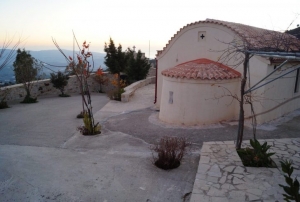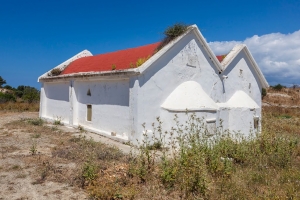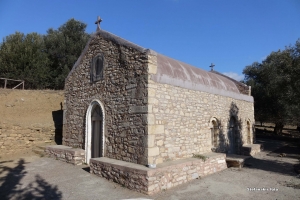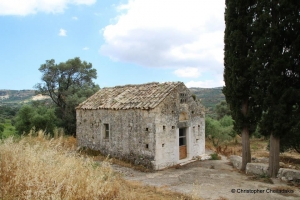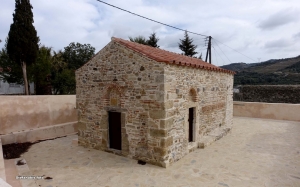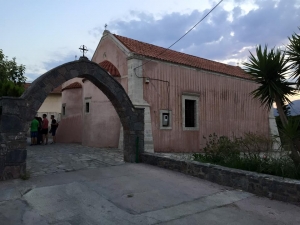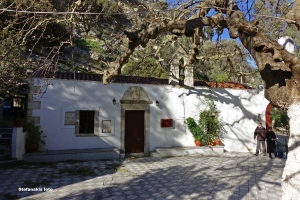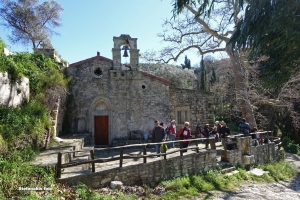The Monastery of Agios Nikolaos is a small dependency of Vrondisi monastery, built on Mount Sanida above the village Skourvoula. The old ruined monastery was restored by the monk Iosif Androulakis and reoperated in 2014. The interior of the temple is adorned with nice modern frescoes, while from the courtyard one can admire the nice view to the shores of Messara.
The two-aisled church dedicated to the Holy Trinity (Agia Triada) is located a few meters SW of the homonym archaeological site. The temple dates back from the 14th century and was the main temple of a village that existed here during the Venetian Era.
The church of Agia Marina (celebr. July 17) by Agii Deka is a single-nave vaulted temple daing back from the 9th century (today it has been restored). The church bears traces of frescoes.
The church of St. John was built during the Venetian period in Crete and it probably was full of frescoes. The frescoes were unfortunately whitewashed. A few years ago the Archaeological Service uncovered some parts of the original hagiographic decoration. The walls however even today remain whitewashed.
In the middle of the village Apomarmas we meet the Byzantine church of Panagia Galaktousa, dating back from the 13th century. According to tradition the founder used milk instead of water in the mortar, thus the name Galaktousa (milky) was given. In fact the name probably is connected with the icon of the Virgin suckling Christ.
The two-aisled church of Saint Kiriaki (Agia Kyriaki) is one of the oldest in the settlement of Zaros, as one of the two aisles dates back to the 14th century and the second to the 17th century. The temple has undergone modern interventions and its interior does not bear frescoes.
The abandoned settlement of Apolychnos is located at an altitude of 220m, in the beautiful canyon of Apolychnos with springs and plane trees. Above the springs there is the Byzantine church of Saint Panteleimon.
The impressive two-naved church of Agios Charalambos and Panagia is preserved in the green valley with the deserted settlement of Paliama. The temple interior bears fragmentary traces of frescoes, but its main feature is the presence of ancient architectural parts on the walls.











